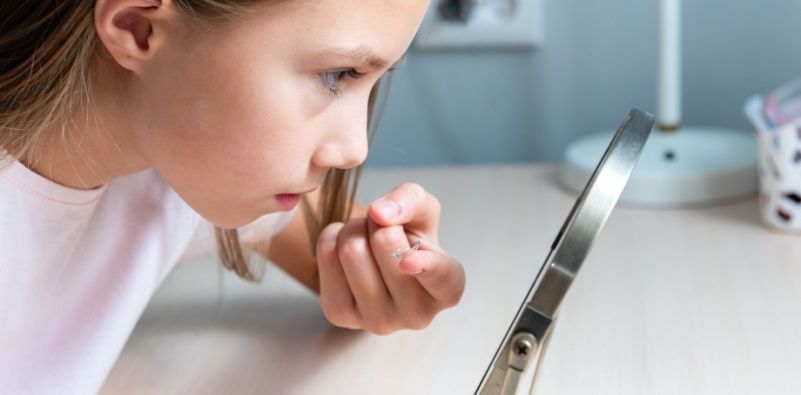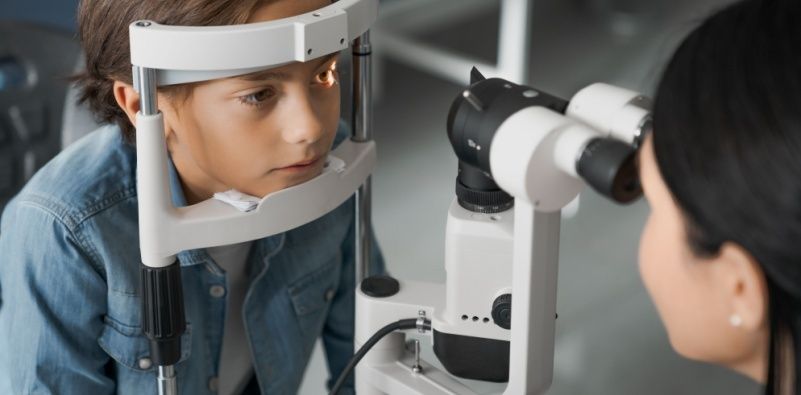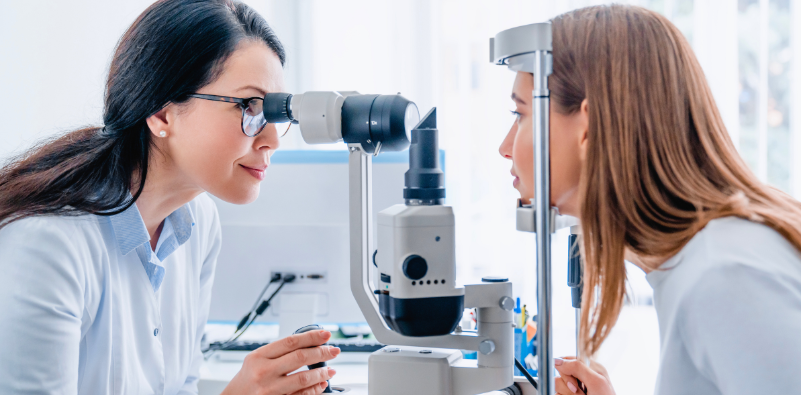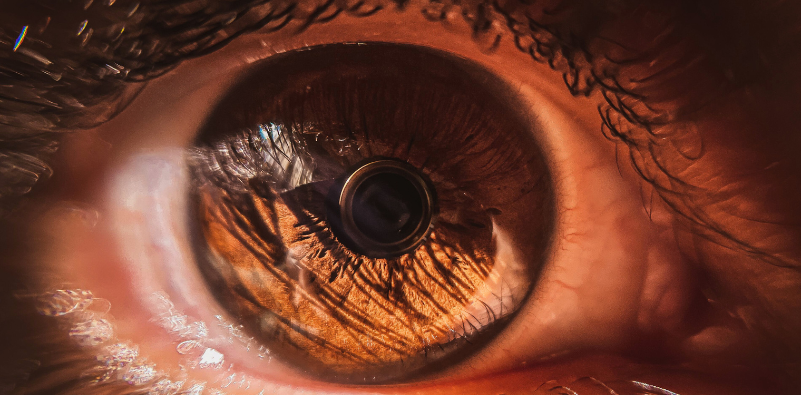How can you protect your short-sighted child's eyes?
Myopia, often called short-sightedness, is one of the most widespread eye conditions affecting children. By 2050, it’s estimated that 50% of the global population will be affected by this condition, which is why we are passionate about protecting your child’s eye health.
In this article, we’ll explore what myopia is, why it’s important to slow its progression, and the innovative management options we offer to support your child’s vision.
What does being short-sighted really mean?

Being short-sighted, or myopic, means seeing objects up close clearly, while those further away appear blurry or out of focus. This happens when the light entering the eye doesn’t focus properly on the retina, the part of the eye that converts light into signals for the brain to interpret as images.
Myopia affects around 1 in 3 people in the UK and is primarily influenced by genetics. If one or both parents have myopia, the likelihood of developing the condition significantly increases. However, environmental factors such as extensive screen time and limited outdoor activities have also contributed to its progression.
Impact on play and learning

Being short-sighted, or myopic, means seeing objects up close clearly, while those further away appear blurry or out of focus. This happens when the light entering the eye doesn’t focus properly on the retina, the part of the eye that converts light into signals for the brain to interpret as images.
Myopia affects around 1 in 3 people in the UK and is primarily influenced by genetics. If one or both parents have myopia, the likelihood of developing the condition significantly increases. However, environmental factors such as extensive screen time and limited outdoor activities have also contributed to its progression.
Impact on play and learning

Over time, unmanaged myopia may lead to high myopia, increasing the risk of complications later in life. Eye conditions such as retinal detachment, glaucoma and myopic macular degeneration could develop in adulthood if the proper precautions are not taken.
However, with today’s incredible advancements in eye care, the outlook is overwhelmingly positive. By taking proactive steps now, your child’s eye health can be safeguarded for years to come.
Modern solutions

At Harrold Opticians, we offer some of the latest myopia management solutions, including specialised glasses and contact lenses to correct short-sightedness in children.
- MiYOSMART spectacle lenses
For parents who want a glasses option, MiYOSMART lenses deliver clear vision while actively slowing myopia progression. They’re lightweight, impact-resistant, and provide UV protection – an excellent all-round choice for busy children. - MiSight 1 Day contact lenses
Designed specifically for children, MiSight contact lenses for short-sightedness have been proven to not only correct vision but also slow the progression of myopia. These lenses are so simple that even children as young as 8 can easily use them. They’re a fantastic choice for active kids who want the freedom to move without glasses.
· MYLO monthly contact lenses
These custom-made lenses offer advanced features like Extended Depth of Focus (EDOF) technology which creates a single focal point in the eye, ensuring clear and comfortable vision. Perfect for kids who prefer a tailored solution.
Each of these options allows our optometrists to find the solution that best suits your child’s needs and lifestyle, ensuring they feel comfortable while enjoying crisp, clear vision.
Time for a test?

Annual eye tests for children are an important part of maintaining their eye health. These tests are quick and easy and provide valuable insights into overall eye health and potential conditions. Scheduling routine eye exams ensures any vision concerns are identified and addressed early, giving your child the best possible start in school, sports, and daily life.
Reach out to our team
If it’s been a year or more since your child’s last eye test, or you have noticed behaviours such as squinting or holding objects close to the face, get in touch to book an appointment and ensure your child continues to thrive.











